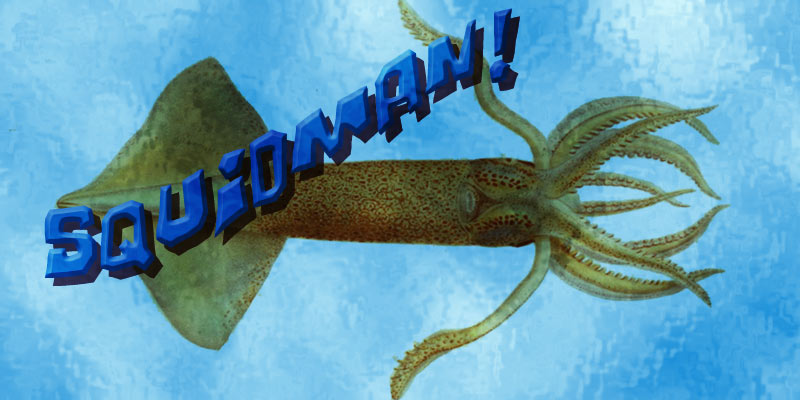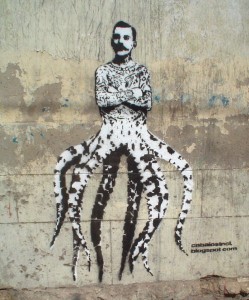
Not many animals could legitimately claim to have a super power. But two little sea creatures, living deep in the dark blue ocean, have an ability many of us have fantasised about possessing – they can turn invisible at will.
The heroes of this story are two cephalopods – an octopus called Japetella heathi and a cuttlefish called Onychoteuthis banksii – henceforth known as the supersquid. You can see their near-magical talents in the video below:
http://www.youtube.com/watch?v=0xDk9PjoJlQ
Why should the supersquid need such an awesome power? Sarah Zylinski from Duke University, North Carolina tested the two squid in conditions replicating their natural habitat, and found a surprising conclusion – they weren’t using their invisibility to sneak into the ladies locker room.
The real reason is a lot less frivolous – avoiding predators. Being invisible seems like the perfect way of avoiding being eaten, but surprisingly this is not always the case. The supersquid live in a rather large number of depths. Nearer the surface, where ambient light is dominant, transparency works brilliantly. The trouble comes further down in the ocean depths.
Lower down in the sea, light from the sun becomes weaker and weaker. Eventually, the dominant form of illumination comes from bioluminescence – light give out by living organisms. The most famous example of this is the anglerfish – who uses a danging biological searchlight to hunt for prey.
This type of light is more directed than the diffuse light that comes from the sun. The transparent tissues of the supersquid would act like a lens for this bioillumination – concentrating and reflecting the light back to the predator. In effect, it makes them glow in the dark.
To counter this effect, many animals at depth are heavily pigmented with proteins that colour them black or red. Instead of reflecting the light, the pigmentation absorbs the light, allowing the creature to go about its business uneaten.
Because the supersquid have to deal with both environments they have evolved an ingenious way of turning their pigmentation on and off. They use cells called chromatophores, which change colour through muscular contraction.
“Transparency and pigmentation are so ubiquitous as camouflage strategies in the mesopelagic, but usually animals are confined to one or the other,” says Zylinski. “It’s really neat that these cephalopods can use the capacity for rapid change via chromatophores to utilize both strategies.”
I think it’s time Batman and Spiderman threw in the towel. There’s a new superhero in town, and his name is Squidman. Has a good ring to it, I think.
Zylinski, S., & Johnsen, S. (2011). Mesopelagic Cephalopods Switch between Transparency and Pigmentation to Optimize Camouflage in the Deep Current Biology, 21 (22), 1937-1941 DOI: 10.1016/j.cub.2011.10.014
